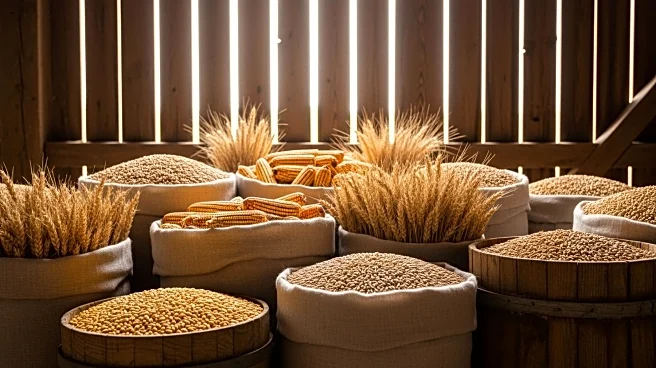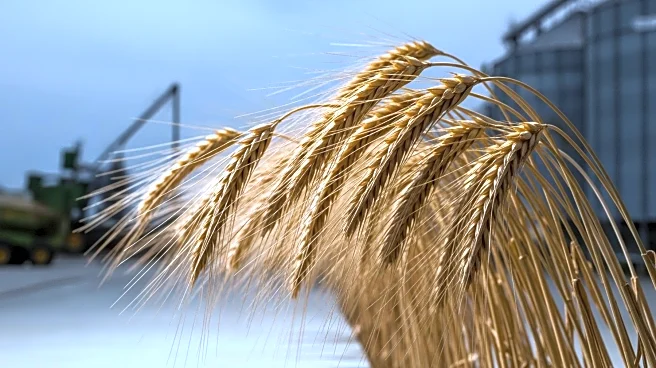What's Happening?
The USDA released its September Grain Stocks report, revealing that U.S. old-crop corn stocks as of September 1, 2025, were at 1.532 billion bushels, which is 13% lower than the previous year but higher than the average trade expectation of 1.336 billion bushels. Soybean stocks were reported at 316 million bushels, down 8% from the previous year and below the expected 322 million bushels. Wheat stocks were at 2.12 billion bushels, exceeding expectations and up 6% from the previous year. The USDA also adjusted the 2024 corn and soybean production estimates, increasing corn production by 25 million bushels and soybean production by 7.74 million bushels. These adjustments have led to bearish reactions in the corn and wheat markets, while soybeans saw a slight bullish response.
Why It's Important?
The unexpected increase in corn and wheat inventories could lead to lower prices for these commodities, affecting farmers and traders who rely on market stability. The larger-than-expected stocks may alleviate some pressure on end users, providing an opportunity to secure cheaper corn amidst lower yield results due to disease. The adjustments in production estimates for 2024 suggest a potential shift in supply dynamics, which could influence future USDA reports and market expectations. The bearish sentiment in the corn and wheat markets may impact planting decisions and financial planning for farmers.
What's Next?
The USDA's adjustments to the 2024 production estimates may lead to further revisions in upcoming World Agricultural Supply and Demand Estimates (WASDE) reports. Traders and market analysts will closely monitor these reports for additional changes in yield and stock projections. The market will also watch for any shifts in export demand, particularly for soybeans, which could influence future price movements. Farmers may need to consider storage solutions for the larger-than-expected grain stocks, as well as adjust their planting strategies based on market conditions.
Beyond the Headlines
The USDA's report highlights the complexities of agricultural forecasting and the challenges in accurately predicting crop yields and inventories. The adjustments to production estimates underscore the importance of adaptive strategies in agricultural planning and the need for robust data analysis. The report also raises questions about the impact of disease on crop yields and the potential for future disruptions in supply chains.











